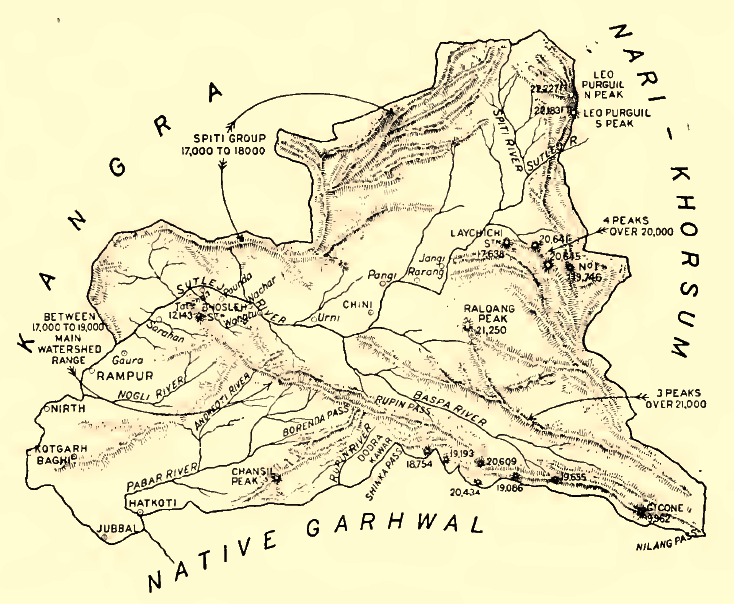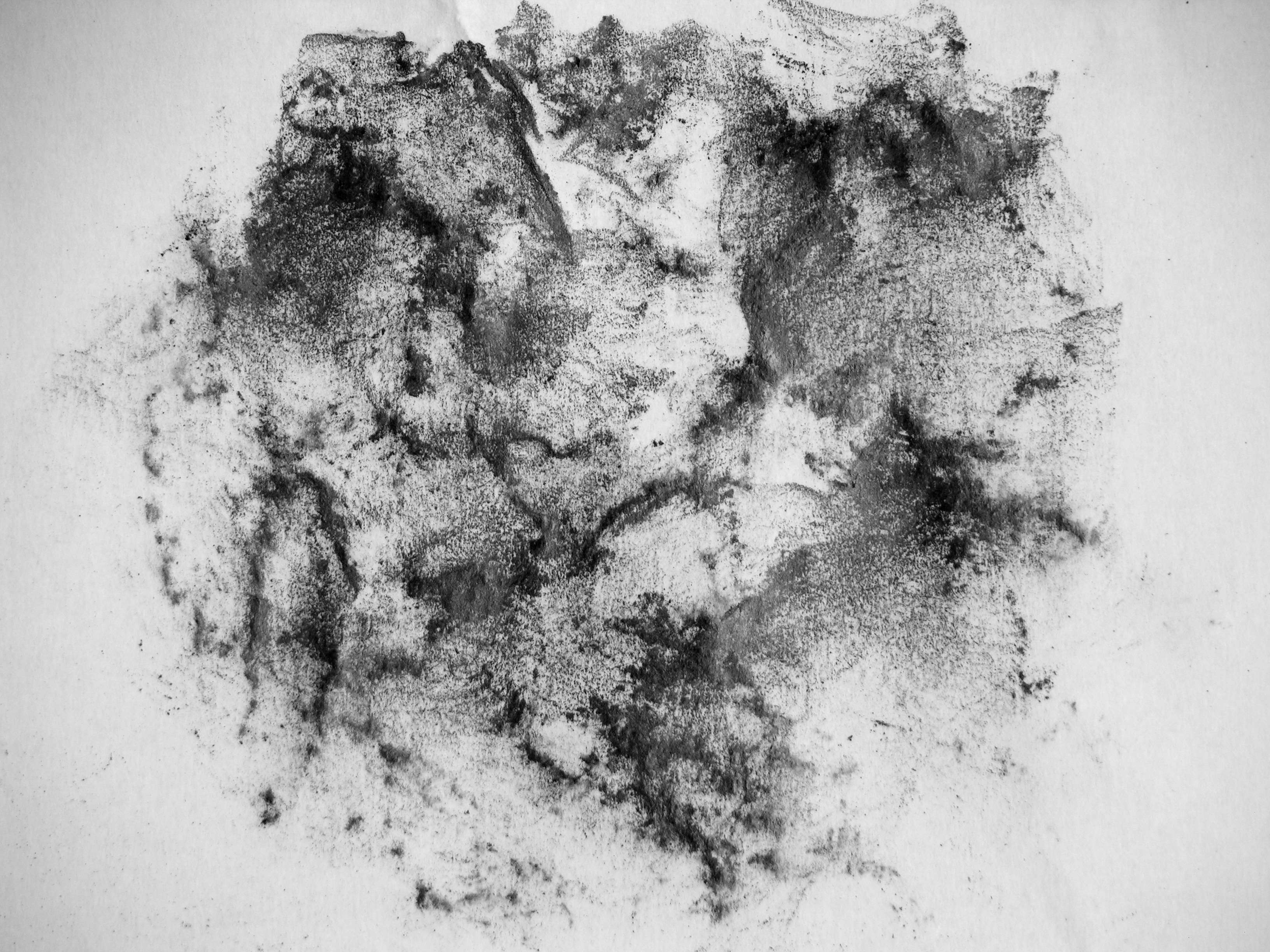|
Kullu Shawl
A Kullu shawl is a type of shawl made in Kullu, India, featuring various geometrical patterns and bright colors. Originally, indigenous Kulivi people would weave plain shawls, but following the arrival of craftspeople from Bushahr in the early 1940s, the trend of more patterned shawls came to rise. Typical Kullu shawls have geometrical designs on both ends. The shawls may also have floral designs, which may run all over. Each design may have up to eight colors. Most traditional colors are often bright colors, used to emphasize the shawl and make it more appealing, however, there are instances where the shawl is made with a more dull color, such as pastel. Kulu shawls are also crafted in yak's wool, sheep wool, Pashmina, and other handcrafted material. History Prior to national independence, modern and industrialized clothing products did not reach much of the rural parts of the nation. The region in which the Kulivi people inhabit are a temperate region in the Himalayan region, ... [...More Info...] [...Related Items...] OR: [Wikipedia] [Google] [Baidu] |
Shawl
A shawl (from fa, شال ''shāl'',) is a simple item of clothing from Kashmir, loosely worn over the shoulders, upper body and arms, and sometimes also over the head. It is usually a rectangular or square piece of cloth, which is often folded to make a triangle, but can also be triangular in shape. Other shapes include oblong shawls. History The words "shawl" and "pashmina" come from Kashmir, the northern region of the Indian subcontinent. Sources report cashmere crafts were introduced by Sayeed Ali Hamadani who was an Iranian scholar when he came to Kashmir in the 14th century. He found that the Ladakhi Kashmiri goats produced soft wool. He took some of this goat wool and made socks which he gave as a gift to the king of Kashmir, Sultan Qutbuddin. Afterwards, Hamadani suggested to the king that they start a shawl weaving industry in Kashmir using this wool. That is how pashmina shawls began. The United Nations agency UNESCO reported in 2014 that Ali Hamadani was one of the ... [...More Info...] [...Related Items...] OR: [Wikipedia] [Google] [Baidu] |
Kullu
Kullu is a municipal council town that serves as the administrative headquarters of the Kullu district of the states and union territories of India, Indian state of Himachal Pradesh. It is located on the banks of the Beas River in the Kullu Valley about north of the airport at Bhuntar, Bhuntar, Kullu. Kullu Valley is a broad open valley formed by the Beas River between Manali, Himachal Pradesh, Manali and Larji. This valley is known for its temples and its hills covered with pine and Cedrus deodara, deodar forest and sprawling apple orchards. The course of the Beas river, originating from Beas Kund presents a succession of magnificent, clad with forests of deodar, towering above trees of pine on the lower rocky ridges brings the most out of this magnificent town. Kullu Valley is sandwiched between the Pir Panjal Range, Pir Panjal, Lower Himalayan and Great Himalayas, Great Himalayan Ranges, located in Northern India, 497 k.m. away from the capital of India. History Historica ... [...More Info...] [...Related Items...] OR: [Wikipedia] [Google] [Baidu] |
Kulivi
Kullu is a municipal council town that serves as the administrative headquarters of the Kullu district of the Indian state of Himachal Pradesh. It is located on the banks of the Beas River in the Kullu Valley about north of the airport at Bhuntar, Kullu. Kullu Valley is a broad open valley formed by the Beas River between Manali and Larji. This valley is known for its temples and its hills covered with pine and deodar forest and sprawling apple orchards. The course of the Beas river, originating from Beas Kund presents a succession of magnificent, clad with forests of deodar, towering above trees of pine on the lower rocky ridges brings the most out of this magnificent town. Kullu Valley is sandwiched between the Pir Panjal, Lower Himalayan and Great Himalayan Ranges, located in Northern India, 497 k.m. away from the capital of India. History Historical references about the Kullu valley dates back to ancient Hindu literary works of Ramayana, Mahabharata and the Puranas. ... [...More Info...] [...Related Items...] OR: [Wikipedia] [Google] [Baidu] |
Bushahr
Bushahr, also spelt as 'Bashahr' and 'Bussahir' or 'Bushair' was a Rajput princely state in India during the British Raj. It was located in the hilly western Himalaya promontory bordering Tibet in the northern part of colonial Punjab region. The territory of this former state is now part of Kinnaur and Shimla districts of the present Himachal Pradesh state. The erstwhile Bushahr state was traversed by the Sutlej river. It was bordered on the west by the Kulu, Lahaul and Spiti states and by Tehri Garhwal on the east. It had an area of . History The erstwhile Bushahr state was occupied by a Gorkha king from central Nepal from 1803 to 1815. Ranjit Singh, the ruler of the Sikh state in the Punjab, intervened in 1809 and drove the Nepalese army east of the Satluj river. A rivalry between Nepal and the British East India Company over the annexation of minor states bordering Nepal eventually led to the Anglo-Nepalese War (1815–16) or the Gurkha War. Both parties eventually sig ... [...More Info...] [...Related Items...] OR: [Wikipedia] [Google] [Baidu] |
Pastel
A pastel () is an art medium in a variety of forms including a stick, a square a pebble or a pan of color; though other forms are possible; they consist of powdered pigment and a binder. The pigments used in pastels are similar to those used to produce some other colored visual arts media, such as oil paints; the binder is of a neutral hue and low saturation. The color effect of pastels is closer to the natural dry pigments than that of any other process. Pastels have been used by artists since the Renaissance, and gained considerable popularity in the 18th century, when a number of notable artists made pastel their primary medium. An artwork made using pastels is called a pastel (or a pastel drawing or pastel painting). ''Pastel'' used as a verb means to produce an artwork with pastels; as an adjective it means pale in color. Pastel media Pastel sticks or crayons consist of powdered pigment combined with a binder. The exact composition and characteristics of an individual ... [...More Info...] [...Related Items...] OR: [Wikipedia] [Google] [Baidu] |
Sheep Wool
Wool is the textile fibre obtained from sheep and other mammals, especially goats, rabbits, and camelids. The term may also refer to inorganic materials, such as mineral wool and glass wool, that have properties similar to animal wool. As an animal fibre, wool consists of protein together with a small percentage of lipids. This makes it chemically quite distinct from cotton and other plant fibres, which are mainly cellulose. Characteristics Wool is produced by follicles which are small cells located in the skin. These follicles are located in the upper layer of the skin called the epidermis and push down into the second skin layer called the dermis as the wool fibers grow. Follicles can be classed as either primary or secondary follicles. Primary follicles produce three types of fiber: kemp, medullated fibers, and true wool fibers. Secondary follicles only produce true wool fibers. Medullated fibers share nearly identical characteristics to hair and are long but lack crimp ... [...More Info...] [...Related Items...] OR: [Wikipedia] [Google] [Baidu] |
Pashmina
Pashmina (, ) refers to, depending on the source, a term for cashmere wool of the Changthangi cashmere goat,Janet Rizvi: ''Pashmina: The Kashmir Shawl and Beyond''. Marg Foundation, 2009. ISBN 978-8185026909. for fine Indian cashmere woolRobert R. Franck: ''Silk, Mohair, Cashmere and Other Luxury Fibres''. Volume 19 of ''Woodhead Publishing Series in Textiles'', Elsevier Science, 2001. ISBN 978-1855735408. p. 142. or a synonym for cashmere wool. The word ''pashm'' means "wool" in Persian, but in Kashmir, ''pashm'' referred to the raw unspun wool of domesticated Changthangi goats. In common parlance today, ''pashmina'' may refer either to the material or to the variant of the Kashmir shawl that is made from it. Both cashmere and pashmina come from the same goat but typical cashmere ranges from 12 to 21 microns in diameter, whereas ''pashmina'' can also refer to a cashmere and silk blend (70 % / 30 %) that has a typical fiber range from 12 to 16 microns. History Samples of wool fi ... [...More Info...] [...Related Items...] OR: [Wikipedia] [Google] [Baidu] |
Himachal Pradesh
Himachal Pradesh (; ; "Snow-laden Mountain Province") is a state in the northern part of India. Situated in the Western Himalayas, it is one of the thirteen mountain states and is characterized by an extreme landscape featuring several peaks and extensive river systems. Himachal Pradesh is the northernmost state of India and shares borders with the union territories of Jammu and Kashmir and Ladakh to the north, and the states of Punjab to the west, Haryana to the southwest, Uttarakhand to the southeast and a very narrow border with Uttar Pradesh to the south. The state also shares an international border to the east with the Tibet Autonomous Region in China. Himachal Pradesh is also known as , meaning 'Land of Gods' and which means 'Land of the Brave'. The predominantly mountainous region comprising the present-day Himachal Pradesh has been inhabited since pre-historic times, having witnessed multiple waves of human migrations from other areas. Through its history, the ... [...More Info...] [...Related Items...] OR: [Wikipedia] [Google] [Baidu] |
Indian Shawls And Wraps
Indian or Indians may refer to: Peoples South Asia * Indian people, people of Indian nationality, or people who have an Indian ancestor ** Non-resident Indian, a citizen of India who has temporarily emigrated to another country * South Asian ethnic groups, referring to people of the Indian subcontinent, as well as the greater South Asia region prior to the 1947 partition of India * Anglo-Indians, people with mixed Indian and British ancestry, or people of British descent born or living in the Indian subcontinent * East Indians, a Christian community in India Europe * British Indians, British people of Indian origin The Americas * Indo-Canadians, Canadian people of Indian origin * Indian Americans, American people of Indian origin * Indigenous peoples of the Americas, the pre-Columbian inhabitants of the Americas and their descendants ** Plains Indians, the common name for the Native Americans who lived on the Great Plains of North America ** Native Americans in the Uni ... [...More Info...] [...Related Items...] OR: [Wikipedia] [Google] [Baidu] |
History Of Asian Clothing
History (derived ) is the systematic study and the documentation of the human activity. The time period of event before the invention of writing systems is considered prehistory. "History" is an umbrella term comprising past events as well as the memory, discovery, collection, organization, presentation, and interpretation of these events. Historians seek knowledge of the past using historical sources such as written documents, oral accounts, art and material artifacts, and ecological markers. History is not complete and still has debatable mysteries. History is also an academic discipline which uses narrative to describe, examine, question, and analyze past events, and investigate their patterns of cause and effect. Historians often debate which narrative best explains an event, as well as the significance of different causes and effects. Historians also debate the nature of history as an end in itself, as well as its usefulness to give perspective on the problems of the p ... [...More Info...] [...Related Items...] OR: [Wikipedia] [Google] [Baidu] |





.jpg)